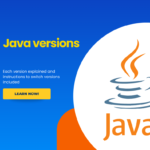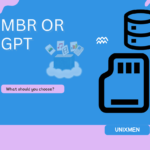
Google Cloud is being extensively used by businesses to harness its capabilities as part of their cloud infrastructure. It’s an all-in-one tool that provides several services under a single platform, and its affordability makes it a popular choice in the cloud environment, where users don’t have to manage any hardware. However, the fact that businesses store a lot of sensitive data in Google Cloud raises security concerns.
In this article, we’ll discuss how you can maximize security on the Google Cloud platform with common data protection practices, including considerations for Linux and Unix environments. By following these steps and best practices, you can ensure operational security in Google Cloud, making it safer for all users, including those familiar with Linux and Unix systems. Let’s dive into what should be prioritized in Google Cloud security, with an integration of Linux and Unix context.
Understanding the Basics of Google Cloud Security in Linux/Unix Environments
Google Cloud provides a robust framework for safeguarding your digital assets, starting with fundamental security measures. In the Linux/Unix world, a similar philosophy of combining proactive strategies and innovative technologies is followed to ensure system security. The shared responsibility model is crucial in both Google Cloud and Linux/Unix environments, emphasizing the collaboration needed between the platform and users to secure data effectively.
Key components such as identity and access management, network security, and data protection are essential in both ecosystems. By understanding these basics, users, whether on Google Cloud or managing a Linux/Unix environment, can establish a strong foundation for building a secure and resilient cloud infrastructure.
Authentication Protocols for Google Cloud in Linux/Unix
Furthermore, Google Cloud provides support for OAuth-based authentication, enabling secure and standardized access to APIs and services. By leveraging OAuth, users can grant specific permissions without disclosing sensitive credentials. This not only streamlines the authentication process but also enhances overall security by reducing the attack surface.
Implementing strong authentication is a shared concern for Google Cloud and Linux/Unix systems. Google Cloud offers multi-factor authentication (MFA), aligning with the best practices in the Linux/Unix world. In Unix environments, integrating SSH keys and Pluggable Authentication Modules (PAM) provides an extra layer of protection, ensuring secure access to systems.
Linux/Unix Security Tools in Google Cloud

Google Cloud’s advanced security tools complement Linux/Unix security practices. The Cloud Security Command Center aligns with Unix’s centralized approach, offering a unified view of vulnerabilities. Linux administrators can seamlessly integrate existing security tools, enhancing threat detection capabilities within the Google Cloud platform.
Tools like Google Cloud Armor and Identity-Aware Proxy resonate with Unix-based access controls. Linux’s robust firewall capabilities align with Google Cloud Armor, offering protection against web-based attacks. Identity-aware access controls in Unix systems find synergy with IAP, ensuring contextual access control.
Beyond the additional authentication protocols and Google Cloud security best practices, the platform itself offers a variety of advanced security tools for organizations. These tools leverage the power of threat detection and intelligence capabilities to keep up with emerging threats.
Access Management Best Practices for Google Cloud and Linux/Unix
Effective access management in Google Cloud aligns with Unix principles of least privilege. Google Cloud IAM and Linux’s user/group permissions model share the goal of limiting access to essential resources. Regular access reviews and log analysis in both environments are crucial to maintaining security and ensuring only authorized users have access.
Implementing IAM solutions in Google Cloud aligns with Unix practices of managing digital identities centrally. Integrating these solutions streamlines access management, promoting a secure cloud and Unix environment.
Encryption Strategies for Google Cloud and Linux/Unix
Encryption is imperative for both Google Cloud and Linux/Unix systems. Google Cloud’s Key Management Service (KMS) resonates with Linux’s emphasis on secure key management. Implementing server-side encryption aligns with Linux’s approach to securing data at rest.
In a Unix environment, utilizing TLS for secure communication channels mirrors Google Cloud’s emphasis on data in transit encryption. Both environments prioritize encryption to safeguard against unauthorized access, ensuring data integrity and confidentiality.
Security Audits and Compliance Checks in Google Cloud and Linux/Unix
Regular security audits are essential for both Google Cloud and Linux/Unix. Linux administrators can perform penetration tests and analyze user rights, aligning with security practices in Google Cloud. Security audits in Google Cloud provide insights similar to those obtained through Unix practices, ensuring the identification and resolution of vulnerabilities.
Collaboration between legal and IT teams for compliance aligns with both environments. Updating security policies in response to industry standards resonates with the dynamic nature of security in both Google Cloud and Unix.
Incident Response in Google Cloud with Linux/Unix Considerations
Swift response to security incidents is imperative for both Google Cloud and Linux/Unix systems. Google Cloud’s Incident Response capabilities empower users to detect and mitigate threats efficiently. In a Linux/Unix context, administrators can leverage their knowledge of system-level incidents, aligning with Google Cloud’s incident response plan.
Leverage tools like Google Cloud Security Command Center to gain real-time insights into security events, a practice akin to Unix administrators using similar tools for incident response. Regularly simulating incident scenarios through tabletop exercises refines response strategies, ensuring a coordinated and effective response.
Keeping Up with Latest Security Updates and Trends in Google Cloud with Linux/Unix Perspective
Keeping up with the ever-changing cybersecurity landscape is essential for both Google Cloud and Linux/Unix environments. Linux administrators can benefit from updates and security warnings from Google Cloud, learning about the most recent fixes and improvements. Participating in security forums and the Google Cloud community, alongside engaging in Linux/Unix communities, allows for the exchange of knowledge and awareness of new dangers. Taking part in ongoing training and education initiatives is crucial for both Google Cloud and Linux/Unix users, fostering a proactive mindset to address security challenges effectively. By seamlessly integrating Google Cloud security practices with Linux/Unix considerations, users can build a comprehensive approach to secure their digital assets across diverse environments. This integration ensures that security measures are harmonized, providing a robust defense against evolving cyber threats in both Google Cloud and Linux/Unix ecosystems.




